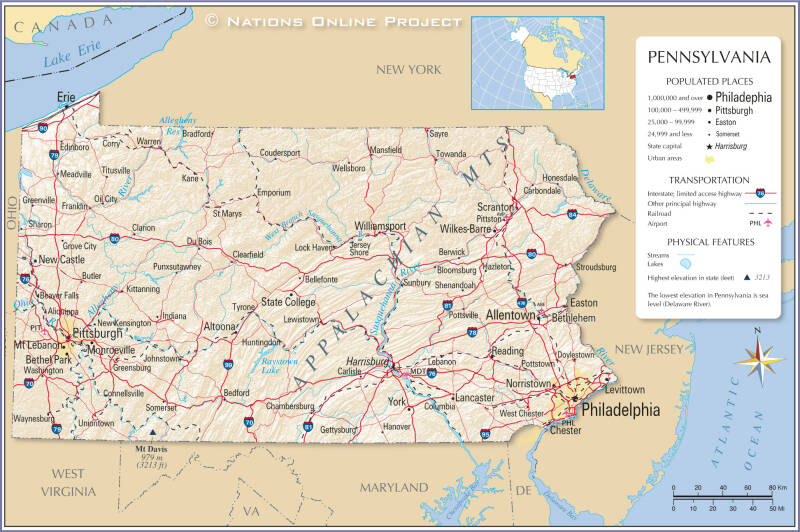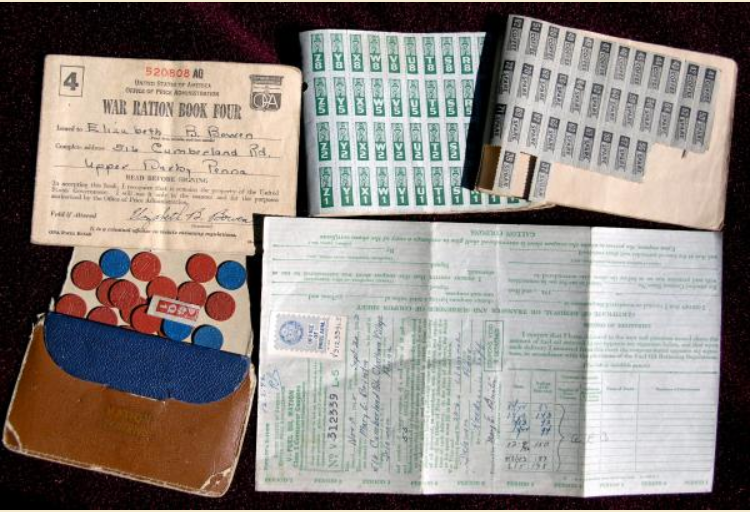State Homefront
State Scale: Pennsylvania's role in WWII
Arthur James, Pennsylvania's Governor during World War II said that Pennsylvania would become the "Arsenal of America" and in many ways, this did become reality. More than 900,000 men and 22,000 women from Pennsylvania served in the armed forces, meaning there were many jobs left for those still at home. Pennsylvania had many factories and was a leading producer of steel and coal during the war. Bethlehem Steel, a major steel company in PA produced bomb casings, armor piercing shells, airplane parts and engines, submarine air flasks, railway equipment, and many other materials needed for the war. The state also produced the highest quality lubricating oil and millions of gallons of 100-octane gasoline, which was needed for aircraft engines. As well, Pennsylvania was the leading supplier of Portland cement. Dravo corporation built landing ship tanks used in storming of enemy beaches and the Sun Shipbuilding company constructed about 40% of all tankers built during the war. In addition to these companies that produced materials, people were encouraged to collect metal scraps to be made into ammunition.
In addition to the great increase in industrial production in Pennsylvania, agricultural production also rose. The lessening amount of farmers were expected to yield larger crops than ever before. As with the entire country, people faced food shortages, leading to rationing and urban citizens planting "Victory Gardens." Another way in which people were encouraged to support the war effort was by buying war bonds. Finally, the war also had an impact on the struggle for race equality, the Pennsylvania Courier started the Double V Campaign which urged African Americans to fight for “Victory at Home, Victory Abroad.”
Map of Pennsylvania
Map highlighting Dauphin County, PA
Private Espenshade resided in different locations in Pennsylvania before going to war.
Private Espenshade enlisted in Harrisburg, PA which is located in Dauphin County.


County scale: Dauphin County's role in WWII
Because many of the county's immigrants and settlers came from pacifist backgrounds, not all wanted to partake in the violence. However, these people and others on the home front still contributed to the community's war effort through agriculture work and manufacturing. Students helped by buying war saving stamps. As well, a USO was located at the Pennsylvania Railroad Station in Harrisburg and gave service members a place of relaxation.
Statistics:
- Pennsylvania was responsible for 31% of America's steel production and 20% of steel production worldwide
- More than 1.6 Pennsylvanians served in the state’s volunteer army of civil-defense soldiers (airplane spotters, caring for equipment, administering the state rationing system)
- At peak, more than 2.5 Pennsylvanians were working in industry during World War II
- Pennsylvania was home to more than 40 military bases
- Sun Shipbuilding company constructed about 40% of all tankers built during the war
- The Pennsylvania War Fund raised close to $27 million in three years

This map shows the great increase in pig iron and steel production that Pennsylvania experienced during the war. Pennsylvania supplied 31% of America's steel and 20% of worldwide production during WWII.

Lancaster County farmland, 1939 - Unlike many Pennsylvanians, Espenshade's father did not work in industry but was a farmer. This is not the Espenshade's farmland, however they were also located in Lancaster, so it was likely similar.

War Ration Book Four, with stamps and tokens, Upper Darby, PA, 1943 - Because of food shortages and the need to support soldiers abroad, Pennsylvanians had their food rationed.
Harrisburg Community Chest and War Fund flyer - Pennsylvania state legislature created the War Fund to raise money for the Red Cross, USO agencies, and other services.

The first jeep - The American Bantam Car Co. in Butler PA designed and produced the first jeeps to support the war effort.

Create Your Own Website With Webador